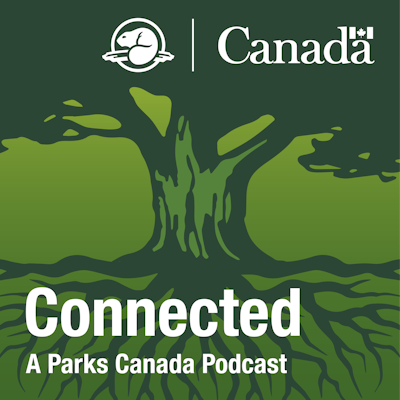
Grizzly bear
Yoho National Park
Quick facts
Eats berries, plant roots and prey animals
Likes connected wilderness with few humans
Weighs up to 595 lbs
Lives 20 to 30 years
SARA status: Special Concern (2018)
Grizzly bears are distinguished from black bears by the large hump on their shoulders. The hump is a mass of powerful muscles. Combined with long claws, these muscles help grizzlies dig, mainly in search of food. They uproot plants, flip rocks, and roll logs. They also excavate dens.
As winter approaches and food becomes scarce, grizzly bears enter their dens. They do not truly hibernate but are dormant for 4-7 months. Their body temperature and heart rate drops, along with other physiological changes. Females may give birth to cubs as well.
Connected: A Parks Canada Podcast New
All animals and plants are protected inside the national parks, but some need extra help. Connected will introduce you to species at risk that are in danger of disappearing.
In Episode 1: Grizzly Bear (12:56), Wildlife Ecologist David Laskin talks about the challenges of studying and protecting grizzly bears, and answers questions like, “How do you put a collar on a bear?!?”. Discover what Parks Canada is doing to help these iconic symbols of the wilderness. Find ways to listen for free below.
Where they live
Grizzly bears are found in a lot of different habitats, from coastal rain forests to arctic tundra. They need areas with a good food supply, denning sites, and few humans. Because 80-90% of their diet is plants, grizzly bears move according to where and when different plants emerge.
In Yoho National Park, grizzlies descend into valleys in spring. They are often seen feeding on dandelions along park highways. They move up into alpine areas in summer, then return to valleys in fall to feed on berries and roots.
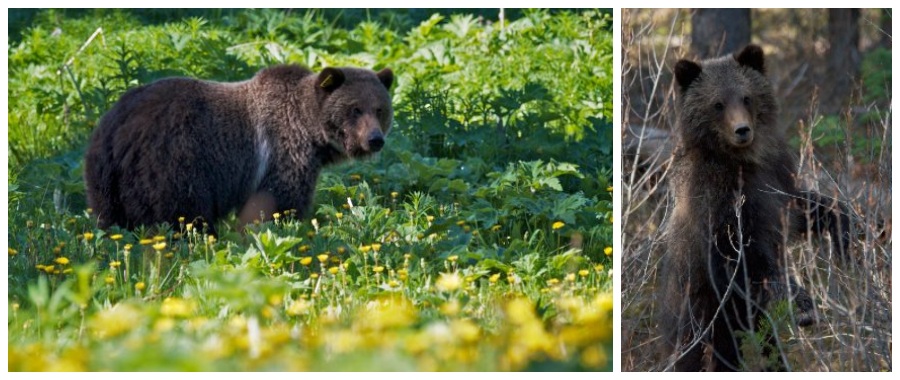
Why they are at risk
Habitat fragmentation
Grizzly bears need vast stretches of wilderness to survive. Male home ranges average 1800 km2, an area larger than Yoho National Park.
Both in and outside of the park, human activities and developments like towns, roads and railways can break up their habitat.
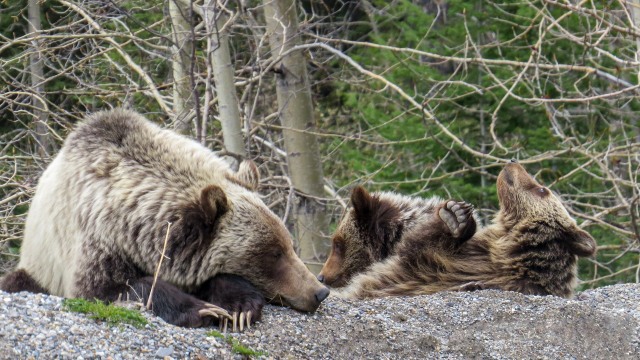
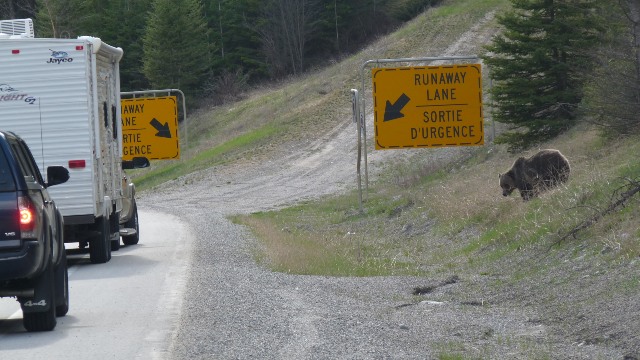
Human caused mortality
Grizzly bears are killed by collisions with trains and cars, as well as conflicts resulting from habituation to people and human food. Outside of the park, grizzlies are threatened by additional activities like poaching and motorized recreation.
Grizzly bear populations are slow to recover because of low reproductive rates. Typically, females don’t have cubs until they are 6 years old and may wait another 3-4 years to have more.
How Parks Canada is helping
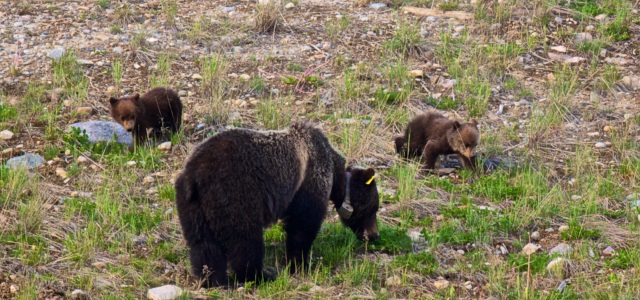
Monitoring
Parks Canada monitors bear activity in the park using remote wildlife cameras, radio and satellite collars, and reported sightings from visitors and staff. This data tells us how bears use habitat and gives an estimate of how many individuals there are.
Any direct conflicts between bears and humans are documented to help prevent future occurrences.
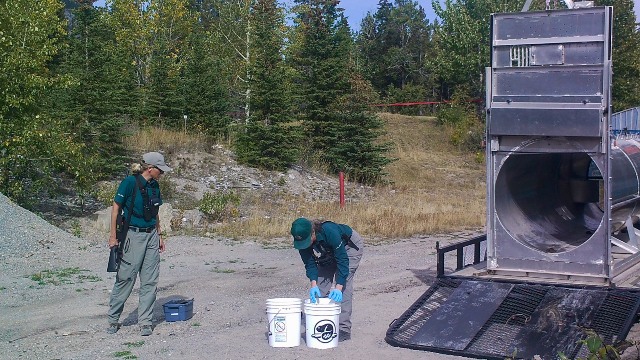
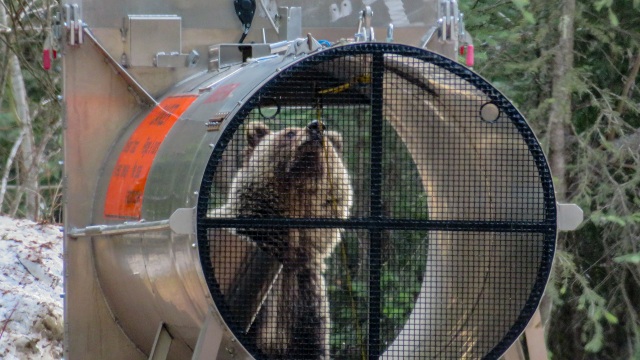
Protecting habitat
In Yoho National Park, grizzly bears and their habitat are protected by law under the National Parks Act and Canada’s Species at Risk Act. Some important travel corridors are closed seasonally, and other area restrictions may be put in place to protect bears.
Parks Canada also restores important habitat using prescribed fire and forest thinning.
Research
Parks Canada collaborates with other scientists and agencies to learn more about grizzly bears and monitor their populations. For example, recent research showed that:
- Grizzly bear populations are stable with an estimated average density of 8.7 grizzly bears/1000 km2 across Banff, Yoho and Kootenay national parks.
- Grizzly bear density was highest within high quality habitat, and far from paved roads.
Protection from human distrubance
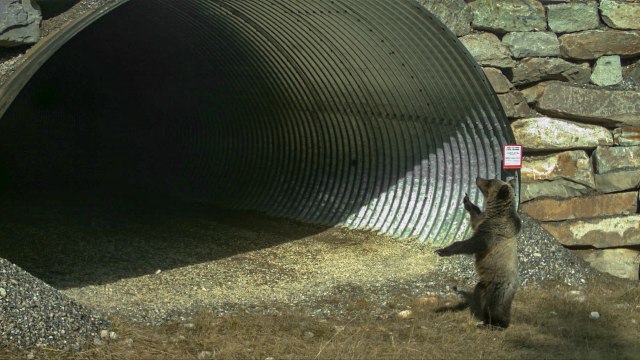
There are reduced speed limits on roads in Yoho National Park, and laws that give all wildlife space. At certain times, Parks Canada uses “no stopping zones” to ensure drivers don’t get too close to bears.
Reducing attractants
Parks Canada provides bear-proof garbage bins and food storage lockers in the park, and enforces the “Bare” Campsite Program to reduce attractants in campgrounds.
Restoring grizzly bear habitat using prescribed fire
Educate yourself! Parks Canada teaches bear safety to visitors, including how to keep a clean campsite, how to use bear spray, and how to travel safely in bear country. Do your part to keep bears safe: I will store my food and scented items safely, and never feed bears: Bears need to find their own natural food sources. Feeding bears, littering, or leaving scented items or food unattended, attracts them to human use areas. This is very dangerous. Dispose of recycling, trash, and food in designated areas. It is illegal to feed bears!How you can help
Take the Pledge
I will give bears space: Bears can lose their natural fear of humans after repeated interactions. If you see bears on the road: Slow down, stay in your vehicle and move on. Chance bear encounters can happen anywhere. Carry bear spray and know how to use it.
I will drive carefully and obey speed limits: Slow down to prevent deadly collisions with bears. In high-risk areas, no stopping zones are used to protect motorists and bears. Respect roadside signage, and only park in designated areas to avoid blocking traffic.
I will keep my dog on leash: To a bear, your pet is potentially a threat or prey. An aggressive response from a bear could put you or your pet in danger.Learn more
- Date modified :
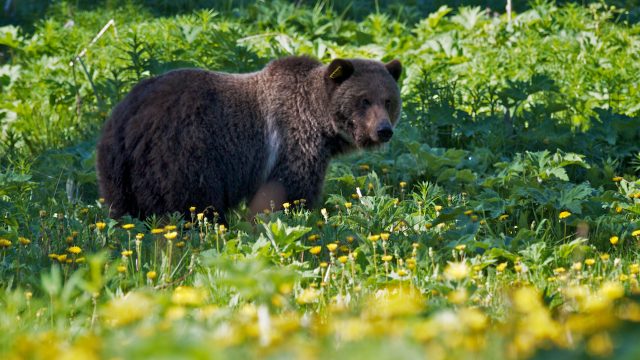
.jpg)
